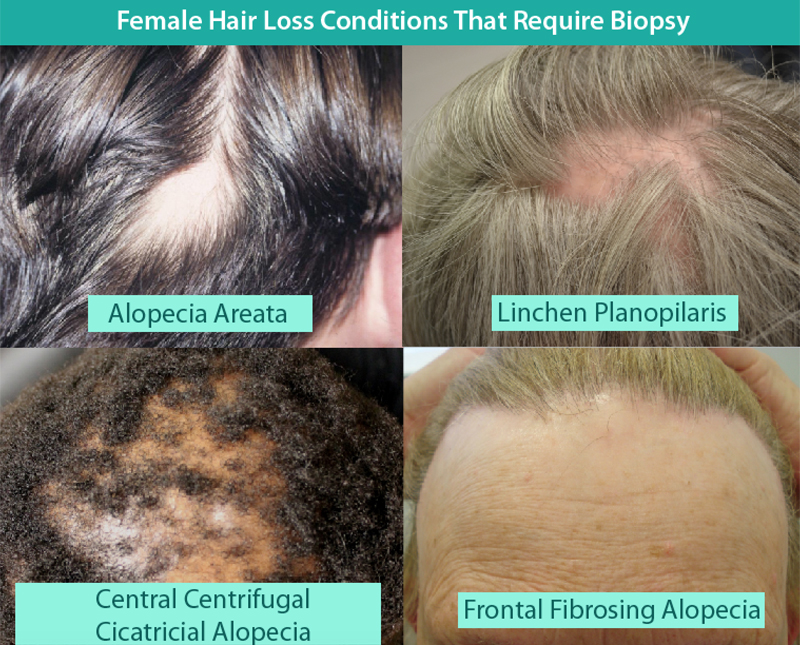Female Metabolic Evaluation Dallas
 Unlike for men, the cause for hair loss in women may be more complex. Despite what may obviously be genetic female-pattern hair loss, there are many other reasons for women to lose hair, and looking into the precise cause of your hair loss may be worth investigation. An example is in younger women heavy menses and resulting iron deficiency may be a cause of hair loss. For women undergoing menopausal changes, hormonal imbalances could accelerate or initiate hair loss. In all ages, a low thyroid or autoimmune disease are other causative agents. A complete blood panel evaluating different hormonal reasons for female hair loss may be the first step of metabolic evaluation. Dr. Lam will send you to your primary-care physician who will treat you if your results show any hormonal abnormality. Dr. Lam may also recommend for you to see a functional medicine specialist, Ayurvedic, or Eastern medicine provider, all of whom oftentimes work on preventative treatments. If your hair loss is stable and only slowly progressive, Dr. Lam most likely can still perform a hair-transplant surgery for you but it is always wise to evaluate whether there may be an underlying cause that would merit treatment.
Unlike for men, the cause for hair loss in women may be more complex. Despite what may obviously be genetic female-pattern hair loss, there are many other reasons for women to lose hair, and looking into the precise cause of your hair loss may be worth investigation. An example is in younger women heavy menses and resulting iron deficiency may be a cause of hair loss. For women undergoing menopausal changes, hormonal imbalances could accelerate or initiate hair loss. In all ages, a low thyroid or autoimmune disease are other causative agents. A complete blood panel evaluating different hormonal reasons for female hair loss may be the first step of metabolic evaluation. Dr. Lam will send you to your primary-care physician who will treat you if your results show any hormonal abnormality. Dr. Lam may also recommend for you to see a functional medicine specialist, Ayurvedic, or Eastern medicine provider, all of whom oftentimes work on preventative treatments. If your hair loss is stable and only slowly progressive, Dr. Lam most likely can still perform a hair-transplant surgery for you but it is always wise to evaluate whether there may be an underlying cause that would merit treatment.
Key Points
- It is important to distinguish between females who are undergoing sudden hair shedding compared to those who are slowly experiencing hair loss over many years. Hair shedding is defined as more than 100 hairs lost per day on days that you do shower. You can count the number of hairs in a bag each day to see if you reach these pathologic numbers. Hair shedding may be a manifestation of telogen effluvium. This can occur 4 to 6 weeks after general anesthesia, significant protein-deficient weight loss, child birth, major life stress, etc. It is usually self-limiting but can be ameliorated with the above therapies.
- If you are having accelerated shedding, then Dr. Lam recommends an evaluation to determine the cause and also prescribes one or several treatments, such as minoxidil, Nutrafol, his product Folliflo, Hairstem treatments, and/or Laser Cap.
- Folliflo – Dr. Lam’s all-natural product took him 3 years to design and has been the most potent therapy to stop hair shedding.
- Hairstem – This innovative, all-natural, therapy has come to offer a newer method of non-invasive platelet-rich plasma (PRP) injections that Dr. Lam offers that does not involve needles, pain, or recovery time. It can help with hair shedding along with other therapies.
- Minoxidil (Rogaine) can be very helpful in slowing down and stabilizing hair falling out but may temporarily increase shedding between 4 to 6 weeks after starting.
- Nutrafol (an oral natural supplement) has been shown to decrease hair shedding in many women if taken for several months during the critical phase of shedding.
- Laser cap is used for low-level laser therapy and is shown to strengthen hairs within 4 to 6 months.
- For chronic hair loss, Dr. Lam recommends almost every woman to undergo a metabolic evaluation as part of his preliminary workup prior to surgery. Correcting lab values will help slow down and rebuild lost hair but typically if the hair loss is moderate to significant then a hair-transplant surgery will most likely still be needed. Accordingly, you would probably benefit from evaluating any causative factors and treating them along with hair surgery as needed. Here is what you should ask your physician to draw:
- ESR (sedimentation rate to evaluate for any inflammatory conditions and if positive then an ANA should be done to evaluate if there is an autoimmune disorder causing the hair loss),
- full iron panel, full blood chemistry including CBC (complete blood count),
- TFTs (thyroid function tests, preferably with reverse T3 as well),
- hormonal levels (DHEAS [the major male hormone in the female], testosterone, estrogen, and other hormones),
- and anything else your physician believes may be helpful.
- At times, Dr. Lam may request your dermatologist to biopsy your scalp in one or several areas of active scalp disease that could be causing your hair loss. The most common type in non-African women today is known as Frontal Fibrosing Alopecia (FFA) that affects the eyebrows first followed by the temporal hair and is accompanied by thinning of the skin and the hair in the frontal hairline region. This type of hair loss is known as a scarring alopecia, or scarring hair loss. You cannot have a hair transplant for this condition during an active disease state or the surgery will fail and no grafts will survive. Even with a burned-out (non-active) condition, Dr. Lam will counsel you on how to proceed. In any case, you must be evaluated and treated by a dermatologist for this condition. If Dr. Lam suspects this scalp disorder, he will send you to your dermatologist for a biopsy to make sure that surgery is safe for you. If you are an African patient, then he may send you for a biopsy of the crown and/or the frontal scalp if he suspects a scarring alopecia known as central centrifugal cicatricial alopecia (CCCA). Like FFA, CCCA will most likely fail surgery and should be treated by a dermatologist and not a surgeon.

FAQs
-
What kinds of surgeries would Dr. Lam perform for a female with hair loss?For answers to this question, please visit the section on female hair restoration.
-
Are there other alternatives to surgery that I can try for my hair loss?During your consultation, Dr. Lam will detail for you the options that are available for you. Oftentimes, minoxidil (Rogaine) is an easy, inexpensive first step. Dr. Lam may combine Rogaine with a steroid component that can help many women since female hair loss has been assumed more recently to be inflammatory in nature. He will taper you to a lower concentration steroid after 6 months and maintain you on that regimen if it is working for you. Other methods include platelet-rich plasma (PRP) injections, which are detailed in the respective section. Most women can repeat PRP injections in 1 to 2 years to maintain the result. Low-Level Laser Therapy (LLLT) refers to wearing a cap with low-level lasers, and this method has been proven to be particularly effective for women to improve their hair-loss condition. SL MAX fibers can make hair appear much thicker but must be reapplied daily. Scalp micro pigmentation is medical tattoo that applies pigment to your scalp to decrease see through and improve visual density. There are sections on Minoxidil, PRP, LLLT, and SL MAX fibers for greater details to explore on each of these topics. For significant hair loss, usually hair-transplant surgery is the most reliable method to restore that loss.
Videos
Please watch Dr. Lam’s SlideShare presentation on female hair loss and hair transplantation.




